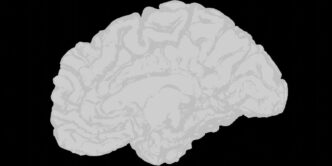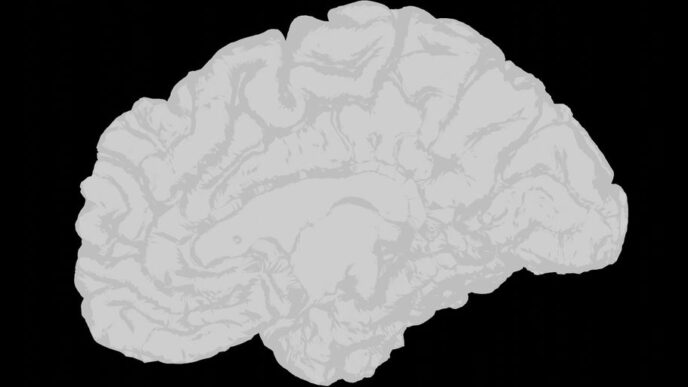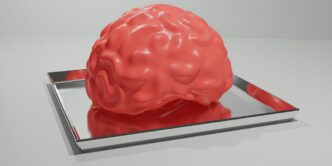Discover the transformative power of AI and neuroforecasting technologies beyond predictive analytics. Explore how these innovative tools revolutionize decision-making across industries, from finance and healthcare to marketing and sports. Learn how businesses leverage data-driven insights to stay ahead of the curve and unlock new possibilities for success.
INTRODUCTION:
Welcome to the world of predictive analytics, artificial intelligence (AI), and neuroforecasting technologies! These cutting-edge tools have revolutionized the way businesses predict future trends and make informed decisions. Predictive analytics has been around for a while now, but with advancements in AI and neuroforecasting technologies, its applications are limitless. In this blog post, we will explore beyond just predictive analytics and dive into how these innovative technologies can be used to transform industries across the board. So buckle up, because we’re about to take you on an exciting journey through the fascinating world of data-driven decision making!
What is Predictive Analytics?
Predictive analytics is a data-driven technique that uses statistical algorithms and machine learning to identify patterns in historical data and predict future outcomes. By analyzing large amounts of data, predictive analytics can help businesses make informed decisions based on insights and probabilities rather than guesswork or assumptions.
This powerful tool enables organizations to anticipate market changes, optimize operations, reduce risks, increase efficiency, improve customer experiences, and more. Predictive analytics can be applied across various industries such as finance, healthcare, marketing, retail, logistics, and transportation.
The key to the success of predictive analytics lies in its ability to leverage both structured and unstructured data from multiple sources, including social media platforms like Twitter or Facebook. The more diverse the dataset used for analysis is, the more accurate predictions will be made.
Overall, predictive analytics has become an essential component for decision-makers who need reliable forecasts at their fingertips. It provides valuable insights into what could happen next, which they would have missed otherwise.
What is AI?
AI, or Artificial Intelligence, is a term that has been thrown around quite frequently in recent years. But what exactly does it mean? At its core, AI refers to the development of computer systems that can perform tasks that would typically require human intelligence. These systems are designed to learn and adapt based on their experiences and interactions with data.
There are several different approaches to AI development, including rule-based systems and machine learning algorithms. In rule-based systems, computers are programmed with a set of rules for making decisions based on specific inputs or conditions. Machine learning algorithms take a more flexible approach by using statistical models to identify patterns within datasets.
One key aspect of AI development is the ability to process large amounts of data quickly and accurately. This allows machines to analyze complex information and make predictions or recommendations based on patterns they’ve identified.
AI has the potential to revolutionize many industries by automating complex tasks and improving decision-making processes. While there are certainly challenges associated with developing these technologies – such as ethical concerns around privacy – it’s clear that we’re only scratching the surface when it comes to exploring all the possibilities offered by artificial intelligence.
What are Neuroforecasting Technologies?
Neuroforecasting technologies are the latest breakthroughs in artificial intelligence (AI) that focus on using brain signals to predict future behavior. These methods use electroencephalogram (EEG) and other neuroimaging techniques to study how the brain reacts to certain stimuli.
The basic principle behind neuroforecasting is that our brains respond differently when we encounter something new or unexpected. By analyzing these responses, researchers can make predictions about what people will do next.
One of the most promising areas for neuroforecasting is in marketing research. Companies can use EEG scans to determine which advertisements or product designs are likely to be more effective with consumers. This allows them to tailor their marketing campaigns more precisely and increase their chances of success.
Neuroforecasting has also shown promise in predicting financial markets, political elections, and even criminal behavior. However, these applications are still relatively new and require further study before they can be relied upon completely.
While there is still much research needed before it becomes a mainstream tool for prediction analysis, Neuroforecasting Technologies remains an exciting development within AI as it offers limitless possibilities across various industries such as healthcare, politics, among others.
How can Predictive Analytics be used?
Predictive analytics is a powerful tool that can be used to provide insights into the future. It allows businesses to make data-driven decisions based on patterns and trends, which help them stay ahead of the curve. By analyzing historical data, predictive analytics algorithms create models that predict future outcomes with a high degree of accuracy.
One way in which predictive analytics can be used is for customer segmentation. By analyzing customer behavior and preferences, businesses can identify different segments within their customer base and tailor their marketing efforts accordingly.
Another application of predictive analytics is fraud detection. Financial institutions use it to detect fraudulent activities by identifying unusual patterns in transactional data.
Predictive maintenance is another area where this technology shines. By predicting when equipment will fail or require maintenance, companies can minimize downtime and reduce costs associated with repair or replacement.
In healthcare, predictive analytics helps doctors identify patients who are at risk of developing chronic conditions such as diabetes or heart disease. This allows them to intervene early and potentially prevent these conditions from occurring altogether.
There are countless ways in which predictive analytics can be applied across various industries to improve business operations and decision-making processes.
Applications of Predictive Analytics:
Predictive analytics can be applied in various industries and fields, from finance to healthcare, sports to marketing. In the financial sector, predictive analytics is used for fraud detection and credit scoring. Fraudulent activities are identified by analyzing patterns of transactions while credit scores are predicted through analyzing past loan behaviors.
In the healthcare industry, predictive analytics is utilized for early diagnosis and prevention of diseases. Medical data such as patient records and test results can be analyzed to identify potential health risks before they become severe illnesses.
Sports teams also use predictive analytics to improve their performance on the field. Based on player data such as age, physical condition, recent performances, and other factors, a team’s coach can make informed decisions about lineups or strategies during games.
Marketing companies also rely heavily on predictive analytics when it comes to customer behavior analysis that helps them tailor their campaigns accordingly. By analyzing customers’ browsing history, preferences, and buying habits, brands are able to design targeted ads that offer greater relevance.
Predictive analytics has an enormous range of applications across different industries, making it one of the most powerful technologies around today.
Conclusion:
In today’s world, predictive analytics has become an essential tool for many businesses. However, as AI and neuroforecasting technologies continue to evolve, we are now able to explore the limitless applications of these technologies beyond just predictive analytics.
By leveraging machine learning algorithms and neuroscience principles, businesses can gain deeper insights into consumer behavior patterns and make more informed decisions. From personalized marketing campaigns to optimized supply chain management systems, the possibilities are endless.
As these technologies continue to advance at a rapid pace, it is safe to say that their potential applications will only continue to grow. It will be exciting to see how organizations across various industries leverage AI and neuroforecasting technologies in new ways in the years ahead.













